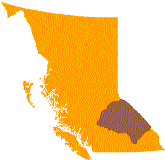 Language |
Pow-wow |
 Chiefs |
 Children |
 Map |
 Life Cycle |
Traditionally, the Secwepemc lived in informal groupings composed of extended family members, the composition of each group varying from season to season. Each band was composed of closely related families that generally wintered within a definite locality. These bands were primarily nomadic and would migrate to spring, summer and fall food-gathering areas, only coming together in the late fall and winter to settle in pit house villages.
Although boundaries were not marked before the arrival of the Europeans, the Secwepemc people had formed bands and established territories based on their food-gathering patterns. Research suggests that the Secwepemc population before contact with Europeans would have been over 21,000. Contact brought new diseases, and by 1850 there were probably 30 Shuswap bands with an estimated population of only 7,200. In the last half of the nineteenth century there was a further decrease primarily due to the small pox epidemic in 1862. Some bands were so reduced in size that the remaining members settled with other nearby bands, leaving only 17 Secwepemc bands by 1903.
Today there are presently over 7000 Secwepemc. There is regular movement away from the reserves and into more populated areas where educational and employment opportunities are available. Many off-reserve Secwepemc live within the territory in the larger communities. Others have moved further abroad to obtain jobs, for training or to be near relatives. But many Secwepemc still live in one of their seventeen communities located within their traditional area.
In 1982 all 17 Secwepemc bands signed the Shuswap Declaration, dedicated
to the preservation and perpetuation of the Secwepemc language, culture,
and history; it led to the formation of the Secwepemc Cultural Education
Society in 1983. This movement led efforts to provide public education
and curriculum materials including the Secwepemc Museum and a native Post-Secondary
Education Institute in Kamloops. It also re-established the annual Shuswap
Gathering.
Home / Table of Contents

